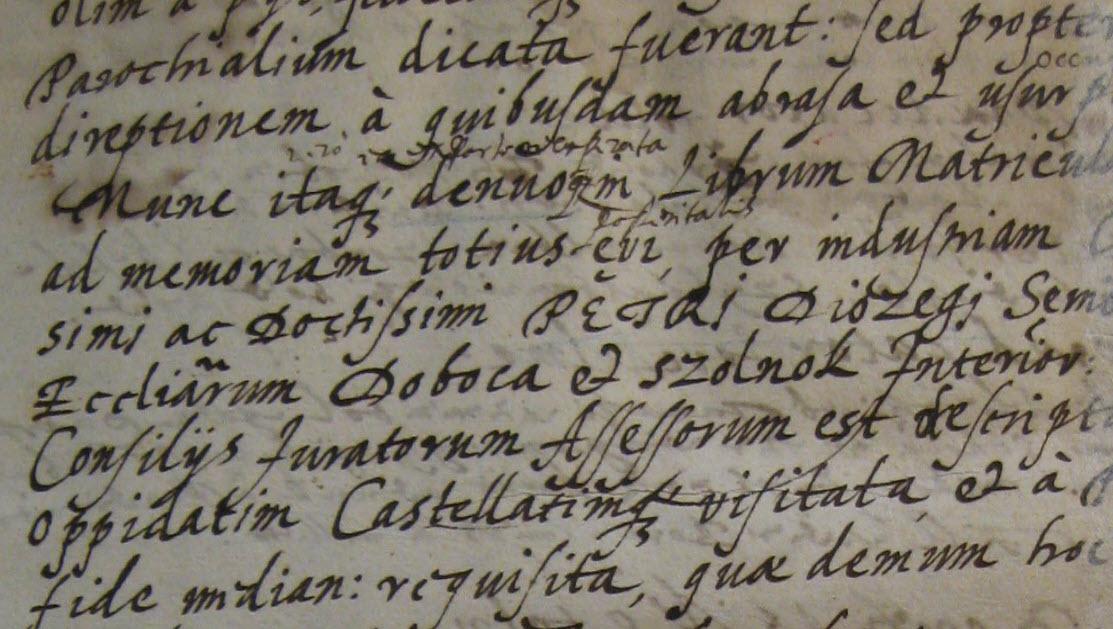Church history

Lelkipásztorok barátsága. Kilencven éve alakult meg a Vécsi Szövetség
Amikor a Vécsi Szövetség jelentőségét, történetét, hatását és mára szóló üzenetét keressük, akkor bevezetésként elkerülhetetlen bemutatnunk azt a kort és szellemiséget, amelyben megszületett Erdélyben a református lelkipásztorok barátságának ideája. A szellemi és a politikai közeg, illetve az egyházi és az egyéni vágy közötti szakadékot a szent naivság akciója, a barátság hidalta át.
„Kinél több igaz bírót nem igen láttam”. Szerencsi [Nánási Fodor] János két zilahi látogatása Zoványi Györgynél
Zoványi György 1728–1758 között a Tiszántúli Református Egyházkerület superintendense, 1711-től haláláig szilágyi (krasznai) esperes Zilahról igazgatta egyházkerületét éppúgy, mint egyházmegyéjét. 1724-ben a kerület főjegyzője lesz, mégpedig úgy, hogy Rápóti Pap Mihály hivatalban lévő superintendens halála esetén succesive utódjává lép elő. Ez 1726 ban meg is történt, de hivatalát csak két év múlva fogadta el. Felszentelésekor sem hagyta el Zilahot, Kereszturi Lukács szabolcsi és Besenyei István érmelléki esperes vette ki tőle az esküt Oroszi István mihályfalvai lelkész társaságában.
Tisza István emlékezete Hollandiában
Tisza István hollandiai kapcsolatainak kutatásával szeretet-adósságot törlesztünk. A politikai teológia szemszögéből is vizsgálódva, kétségen kívül megállapítható, hogy a hollandiai neo-kálvinista irányzat Tisza István számára szimpatikus volt, főleg annak társadalomformáló hatását tekintve. Holland részről Tisza Istvánban az öntudatos kálvinista államférfit látták, aki az alkotmányos államjogot promoválta, és akinek a biblikus gondolkozása a haladást és Isten nagyobb dicsőségét szolgálta Magyarországon.
Gazdasági jellegű sérelmek a Dél-Erdélyi Református Egyházban 1940–44 között II.
A tanulmány I. részében szóltunk már arról, hogy a sérelmes gazdasági intézkedések közül a leggyakoribbak az igazságtalan adókirovások voltak. A brassói konzulátus 1942. június 13-i hangulatjelentésében például többek között az is olvasható, hogy a kiutasítások helyett a román kormány a gazdasági és egzisztenciális ellehetetlenítést választotta eszközül, hogy a magyarokat szülőföldjük elhagyására bírja, ennek pedig egyik igen kedvelt módja a magyarok túladóztatása volt. Az 1941–42. és 1942–43.
Európai kulturális kincs és anyanyelvű istentisztelet
Rektori köszöntés - Rezi Elek, a Kolozsvári Protestáns Teológia rektora. Védnöki beszédek - Adorjáni Dezső-Zoltán, a Romániai Evangélikus-Lutheránus Egyház püspöke; Sógor Csaba európai parlamenti képviselő, RMDSZ és ENP Képviselőcsoport. Témafelvezetés - Benkő Tímea és Kiss Jenő a Kolozsvári Protestáns Teológia tanárai
Az elképzeléstől a megvalósulásig. Bethlen Gábor elveszett graduálja és az Öreg graduál
A reformációt követően a középkori gregorián énekörökség protestáns hitelvek alapján átdolgozott, magyar nyelvű anyagát rögzítő graduálok – néhány kivételtől eltekintve – kéziratos formában terjedtek. Bethlen Gábor fejedelem graduálja a ma már nem hozzáférhető, elpusztult kéziratos graduálok vagy graduál jellegű énekeskönyvek közé tartozik.
Az Öreg graduál (1636) mint nyomdatörténeti különlegesség
Nemcsak az 1636-os évnek, hanem a fejedelmi nyomda egész korszakának legnagyobb teljesítménye a Geleji Katona István és a püspöki székben elődje, Keserűi Dajka János által összeállított Öreg graduál volt. A fejedelmi nyomda készletében 1632-től 1636-ig történt gyarapodás (egy már korábban is meglévő nagyméretű betű kurrens betűkkel való kiegészítése, egy további kiemelő típus és két nagyméretű, fából készült fraktúr sorozat) már nyilvánvalóan a nyomda legnagyobb vállalkozásával, az Öreg graduállal hozható összefüggésbe.
A keresztyén egyház ősi zenei nyelve
Az ősi népek zenéit, énekét musica humana névvel emlegetik, amely a lélek belső harmóniáját jelenti, és ezt az emberi kultúra musica mundanavá, a mindenség hangjává alakítja át (Szabolcsi Bence). E kor emberének is voltak ősi rítusai, szokásai (születési, beavatási, házassági, hálaadó, kérő, áldó, elhárítói, végtisztességet tevő, halottsiratási rítusai). A kereszténység zenei alapja a zsinagógai és jeruzsálemi temploméneklés és zene talajában gyökerezik.
Az Öreg graduál Psalteriuma
Bepillantásul a magyar református graduálok zsoltárainak és az Öreg graduál Psalteriumának világába, alkalmas idéznünk a negyedik bűnbánati zsoltár lezárását. Ebben az utolsó versben a szertartás szóbeli és írásbeli szöveghagyománya és a Vizsolyi Biblia fordítása között a bűnbánat és áldozat megítélése a különbség. Úgy adaptálta a szöveget (mellőzve a filológiai akríbiát) a reformáció hajnalán a magyarító prédikátor, hogy a belső történésnek, a megigazulásnak kedvezett a külsődleges cselekmény hátrányára. Eltért a Vizsolyi Bibliától.